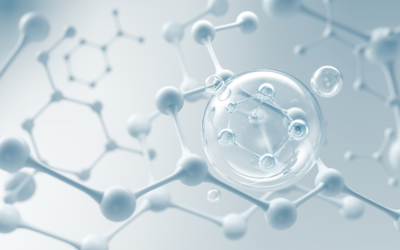
In 2020, an average of 21 patients died each day in Europe while waiting for an organ transplant. Demand far exceeds supply. Tissue engineering aims to solve this crisis by creating human body parts directly in the laboratory, ready for transplantation.
Prosthetic research has made great strides in recent years; the next step could very well be to move beyond robotic prostheses in favor of real, “flesh and blood” body parts created from the patient’s own stem cells. How far are we from this reality?
Why grow organs in the laboratory?
As mentioned earlier, demand for organs for transplantation far exceeds supply, and many patients die waiting. When a donor is then found, the risk of rejection of the transplanted organ takes over, which at best involves taking immunosuppressive drugs for life.
A bioartificial organ solves these problems because:
- It is generated as needed, without the need for a donor.
- It is created from the patient’s own cells, considerably lowering the risk of rejection.
But the advantages do not stop with transplants alone. The ability to grow organs in the laboratory allows scientists to conduct advanced biomedical studies on human tissue, without the need to experiment on a living person. This can lead to a better understanding of disease mechanisms, their development and progression.
Organoids, small three-dimensional structures grown in the laboratory that mimic some of the functional characteristics of human organs, can be used to test new drugs more accurately than animal models. This reduces the risk of unexpected side effects in the early stages of development and reduces the need to use animals for testing purposes.
Researchers are also exploring the potential of this technology from the field of personalized medicine: it is possible to create “test” organs from a patient’s cells to test response to certain treatments or drugs.
How organ manufacturing is changing health care
Some of the possible applications envisioned by the researchers are now entering the testing phase. Some volunteers have received the first transfusion of lab-grown red blood cells without any problems. The hope is that these cells could be used in the treatment of disorders affecting red blood cells, such as sickle cell anemia and thalassemia.
Organoids are already becoming common in research, helping, for example, to understand neurological conditions such as ALS or the devastating effect of the Zika virus on brain development. Organoid brains allow researchers to observe, in real time, changes occurring in the brain as they happen, something not possible with humans.
The field of transplantation is also seeing early benefits from this research: there are already a small number of people who have been transplanted with fully functioning bladders or vaginas made from their own cells.
The greatest success in this field remains the production of epidermis, the outermost layer of skin, to replace that injured by burns. The new epidermis sticks and works for decades, although it cannot produce hair or sweat glands. This technique has saved the lives of thousands of burn patients and is used in hospitals around the world.
It is important to keep in mind that organ generation in the laboratory is still a developing science, and many of the challenges regarding complexity in the complete reproduction of body parts have yet to be overcome. However, it is an extremely promising area of research with the potential to revolutionize medicine and biomedical research in the years to come.


